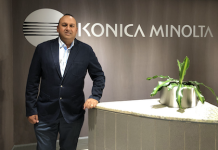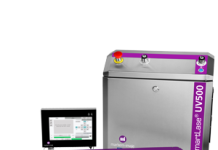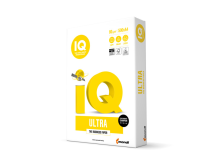Is your printing press, or your policy at risk? Many insurers now demand the use of OEM parts, as non-compliance could jeopardise the entire policy.
Unfortunately, the allure of lower prices often leads to opt for counterfeit or non-original parts. While these counterfeit parts may appear to be a cost-saving measure at first glance, the long-term consequences can be disastrous. This article will explore the severe risks associated with counterfeit UV lamps, electrical components and mechanical spare parts and explain why investing in high-quality components is essential for long-term success in the printing and packaging industry.
In the dynamic and highly competitive world of printing and packaging, the reliability, efficiency and safety of UV and infrared systems are paramount. These systems are not just technological tools; they are the backbone of high-quality production lines that meet the ever-increasing demands for speed, precision, consistency and safety. In such a critical environment, the components that make up these systems, including UV lamps, electrical components and mechanical spare parts, must be of the highest quality.
The High-Cost Printing Press Catastrophe
One of the most striking examples of the dangers associated with counterfeit UV lamps occurred at a leading international printing company. This company, known for its high-volume production and state-of-the-art technology, had invested heavily in cutting-edge machinery to maintain its competitive edge. However, in an effort to reduce costs, the company decided to use non-OEM UV lamps that appeared to offer substantial savings.
In one incident, non-OEM UV lamps initially performed adequately, providing consistent UV output. However, over time, one or more of the faulty lamps overheated, igniting a fire that caused extensive damage to the entire press, other machines and to the building. This led to the insurance company investigating whether the policyholder’s use of non-OEM lamps and parts voided their coverage. Fortunately, there were no fatalities, but several staff members were severely injured.
Understanding Counterfeits
Counterfeit UV lamps, electrical components and mechanical spare parts might seem like an attractive option for those looking to reduce costs, but these seemingly inexpensive alternatives can often come with hidden dangers. Counterfeit parts are often or typically manufactured without the rigorous quality controls and testing procedures that genuine OEM parts undergo, or not made to manufacturer’s specifications, resulting in products that can be inferior in terms of performance, durability and safety.
One of the most significant risks associated with counterfeit parts is their potential to cause serious equipment failures. UV lamps, electrical components and mechanical parts are critical to the operation of UV curing systems, and any deviation from the manufacturer’s specifications can lead to problems such as inconsistent UV output, overheating, and mechanical breakdowns. These issues not only compromise the quality of the finished product but also pose serious safety risks to operators, other personnel and equipment.
Potential Risks
Counterfeit parts can pose numerous risks that can undermine the efficiency, safety and profitability of UV curing systems.
These risks include:
Increased maintenance costs: the use of counterfeit parts can often lead to more frequent repairs and maintenance, as operators must constantly address the issues caused by potentially inferior components. These additional maintenance costs can quickly negate any initial savings from purchasing non-OEM parts.
Safety hazards: counterfeit parts may not meet safety standards, increasing the risk of equipment failures and accidents. Overheated electronic control units, for example, can cause severe damage to machinery and pose serious safety risks to operators.
Regulatory compliance issues: the use of counterfeit parts can lead to compliance issues, as these parts may not meet the necessary industry standards or certifications. This can result in legal and regulatory challenges, as well as potential fines and penalties.
Reduced system lifespan: non-OEM parts are often or typically made from inferior materials and are not designed to meet the exacting standards required by UV curing systems. As a result, these parts tend to wear out quicker, leading to more frequent breakdowns and a shorter overall system lifespan.
Inconsistent performance: counterfeit UV lamps often produce erratic and inconsistent UV output, leading to inadequate curing and poor product quality. This can result in increased waste, rework and customer complaints.
Reputational damage: companies that use counterfeit parts may experience quality issues, production delays and safety incidents, all of which can damage their reputation and erode customer trust. In today’s competitive market, maintaining a strong reputation is essential for long-term success.
The risks associated with counterfeit parts extend beyond immediate operational problems and can lead to long-term financial and reputational setbacks. For companies that rely on UV curing systems to maintain high levels of production efficiency, the potential costs of using counterfeit parts far outweigh any perceived savings.
In the competitive and demanding world of printing and packaging, the choice between counterfeit and OEM parts can have significant consequences for the efficiency, safety and profitability of UV and infrared systems.
For more information, please contact Andrew, Nadine or Heiko:
+27 11 675 6397 or +27 74 899 6976
enquiry@ats-sa.co.za
www.ATS-sa.co.za
www.IST-UV.co.za
www.Technifold.co.za
www.CreaseStream.co.za





















